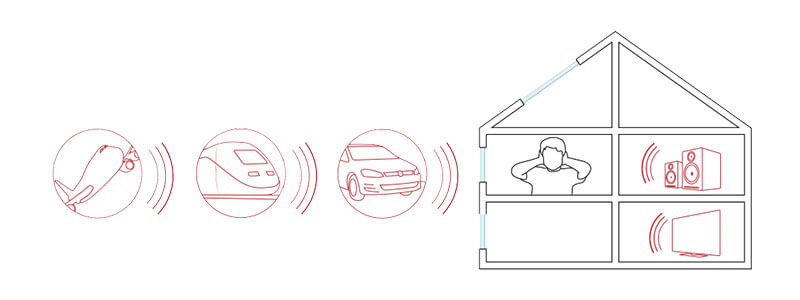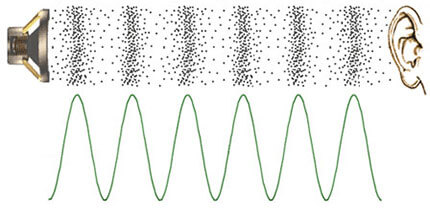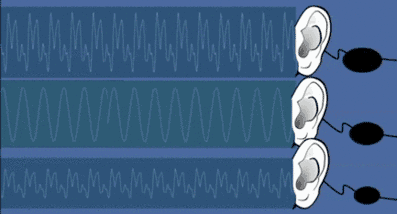Articles
Sound Insulation
Every day you are surrounded by loud noises, such as traffic, the neighbor’s lawnmower, or loud music. Proper sound insulation ensures absolute peace and relaxation in your home. Sit back and relax – without listening to outside noises. This not only increases the quality of life, but also contributes to overall well-being.

Less noise = More euphoria
Today, choosing window frames with high sound insulation is no longer an exaggeration, but often an imperative. Living near airports, next to highways or in the center of big cities is a big noise problem. Even living next door to noisy neighbors where you have to put up with their choice of music at any time of day can be a problem. Constantly experiencing unwanted noises has a serious impact on our well-being and quality of life, leading to insomnia and intense stress.
Coming home after a long day at work, most of us want to close the door and enjoy a quiet retreat from the hustle and bustle of everyday life. Noise perception varies from person to person depending on the source of the noise and each person’s subjective tolerance or acceptance of a particular noise. However, if excessive noise negatively affects our peace of mind, then soundproofing is an investment worth making.

EFFECTS OF NOISE ON HEALTH
The effects of noise on the human body are now medically documented and indisputable. Modern studies have shown that the effects of noise are greater than previously thought, both in human physiology and in the psychology of the individual with consequences on interpersonal relationships. The health effects of urban noise cause unintended responses in the endocrine system, cardiovascular system, gastrointestinal, autonomic and central nervous systems and at the level of cell biochemistry. It is indicative that noise, as an unwanted sound, stimulates the sympathetic system of the autonomic nervous system and as a final result we have an increase in blood pressure, metabolism and breathing. Disturbances in these functions are manifested by headache, nausea, hypertension, muscle contractions, nervous manifestations, emotional stress, fatigue and depression, epinephrine secretion and anxiety, tachycardia and disturbances in psychosomatic and psychological reactions which are difficult to assess. The level of cholesterol in the blood increases, while on the contrary it decreases when the noise is reduced. One of the most destructive effects of noise pollution on our quality of life is the disruption of our mental balance. Deep or acute, abrupt or continuous, they rob our peace of mind, strain our nerves.
These health effects, in turn, can lead to social disadvantage, reduced productivity, reduced learning performance, absenteeism from work and school, increased drug use, accidents, additional burden on health care systems and loss of property value.

What is sound?
Sound is a form of energy created by vibrations. The human ear perceives vibrations from 40Hz to 20KHz and interprets them as sound.
What are sound waves?
When any object vibrates, it causes the air particles to move. These particles collide with neighboring particles, causing them to vibrate and collide with neighboring particles, and so on. This movement, called sound waves, continues until it runs out of energy.


What is the frequency of sound?
Sound can be represented as a mixture of sinusoidal waves of different frequencies. In the adjacent figure, the lower waves have higher frequencies than the upper ones.
What is noise?
Uniform sound frequencies with consistently repeating sound waves produce musical notes. When the vibrations are fast (high frequency), a high note is created, while when the vibrations are slow (low frequency), a low note is created. Instead, confused uneven frequencies with irregular sound waves create annoying noise.


What is the volume of sound?
The ear has the remarkable ability to handle a huge range of sound levels. To express sound levels in numbers that are more convenient, a logarithmic scale is used, rather than a linear one. This scale is the decibel (db) scale which starts at zero (0 dB) which is the lowest acoustic sound that a healthy human ear can perceive..
How do we perceive the volume of sound?
The relative intensity we perceive is a subjective psychological phenomenon, not something that can be measured objectively. Although each 3dB increase represents a doubling of sound density or sound power, most of us perceive a sound as twice as loud as another when it is about 10 dB louder. So a sound at 50dB has 10 times more power than a sound at 40dB and is perceived as twice as loud.
The sound reduction index Rw (C; Ctr)
The sound insulation property of the materials is defined by the index R which represents the difference between internal and external noise levels, incorporates a weighted correction for the human ear (C; Ctr) and is expressed in dB. Measurements are taken in a laboratory according to EN ISO 140 and use a standardized noise spectrum described in EN ISO 717-1.
The index Rw represents the soundproofing properties of the windows. Depending on how a window is constructed and placed, it performs lower at low, mid, or high frequencies. The Ctr correction is usually used when the noise source is an expressway. For general external ambient noise it is best to use correction C. Both corrections are generally negative and are subtracted from Rw to determine the noise reduction properties of a building element.
Intensity
150 dB
140 dB
130 dB
120 dB
110 dB
100 dB
90 dB
80 dB
70 dB
60 dB
50 dB
40 dB
30 dB
20 dB
10 dB
0 dB
Perception
Deafness Threshold
Jet Takeoff
Gunfire
Pain Threshold
Compressor
Chainsaw
Train
Highway
Vacuum Cleaner
Air Condition
Fridge
Common Speech
Whisper
Rustling of Leaves
Breathing
Hearing Threshold

SOUND PROTECTION
Environmental noise must be reduced to levels acceptable to occupants and users. Experts point out that for a good night’s sleep the noise levels in the bedroom should not exceed 30 dB, while for smooth living they recommend less than 40 dB for the home and up to 50 dB for the work environment.
Windows contribute significantly to the sound insulation of your home or office and are categorized according to acoustic performance.
Category 2Rw ≥ 32 dB
Home or office with a low noise level, e.g. in a peripheral district.
Category 3Rw ≥ 37 dB
Home or office with a moderate noise level, e.g. in the city.
Category 4Rw ≥ 42 dB
Home or office with high noise level, e.g. close to public transport (tram, trolley, etc.).
Category 5Rw ≥ 47 dB
Noisy residence or office, e.g. near highway or airport.
GLAZING
In window frames, the glass occupies the largest surface area. Thus, the soundproofing properties of the glass have the greatest influence on the soundproofing properties of the entire frame. There are several ways to improve the soundproofing properties of glass and almost all of them can be used in combination to achieve incredible sound reductions.
Thickness
Glazing is available in various thicknesses. The thicker the glass, the greater the mass, and the greater the mass, the lower the sound transmission.
Gap
The size of the gap between the panes of glass, whether double or triple, makes a significant difference to the level of noise insulation. Usually a large air gap will improve the sound insulation, since sound travels much slower in air than in solids.
Triple Glazing
In addition to better thermal insulation, triple glazing also provides better sound insulation. By cumulatively increasing the overall thickness of the panes combined with the extra gap and the additional barrier of the third pane, a further reduction in sound transmission occurs.
Differentiation
By varying the thickness of the glazing panes we achieve noise reduction at different frequencies. As a result, a double or triple pane of glass with glass of different thickness each and regardless of which is outside and which inside, will be effective in reducing noise over a wider range of frequencies than if all the glass were the same thickness.
The benefit is so great that even two panes of different thicknesses with a small gap have a higher sound insulation than three panes with a greater cumulative mass of glass and two larger gaps but each pane of the same thickness.
CHARACTERISTICS
Glass
Gap
Glass Mass
Soundproof Rw
CHARACTERISTICS
Glass
Gap
Glass Mass
Soundproof Rw
Laminated Glass
In addition to security (passive and active), laminated safety glasses also offer high sound insulation. The PVB Standard film in between has the ability to absorb a much wider range of sound waves than the glass itself. In addition, instead of a simple film, a special PVB Silence acoustic film can be installed for even higher levels of soundproofing.
